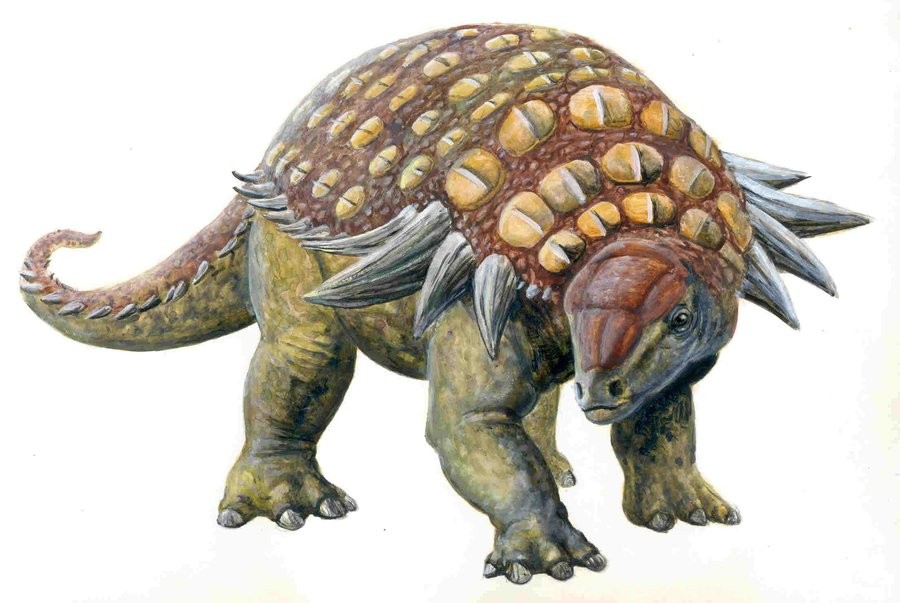Edmontonia
Saturday, November 26, 2016

Edmontonia was an armoured dinosaur, part of the nodosaur family from the Late Cretaceous Period. It is named after the Edmonton Formation (now the Horseshoe Canyon Formation in Canada), the unit of rock it was found in.
Edmontonia was one of the largest nodosaurids, one of the two main groups of the armored ankylosaurs. Nodosaurids characteristically had a boxlike head and bony armor covering the neck, back, and upper surfaces of the tail. This armor consisted of three types of bony elements embedded in the skin. The largest were pronounced spikes, on the shoulders and forming two rows running along the sides of the animal. Shieldlike scutes of varying sizes were arranged in several rows, running lengthwise from the back of the neck to the tip of the tail. In between the scutes and spikes were thousands of small, pea-sized ossicles. Together the spikes, scutes, and ossicles formed an impenetrable shield against the attacks of predators. Even the head had a set of interlocking bony plates over the upper surfaces to protect the brain, eyes and nose.
The huge spikes on the shoulders gave Edmontonia an offensive weapon. By tucking its bony head below them, Edmontonia could drive these spikes forward into an attacker with potentially lethal effect. As with most nodosaurids, Edmontonia’s belly was unprotected by armor and would have been vulnerable to attack if the animal were flipped over. To prevent this from happening, Edmontonia was very low-slung with relatively short, stumpy legs spread wide by broad hips and shoulder girdles. Edmontonia was built rather like a huge coffee table!
Edmontonia was a formidable dinosaur, with its bulky, low-slung body, armor plating along its back, and–most intimidatingly–the sharp spikes jutting out from its shoulders, which may have been used to deter predators or to fight other males for the right to mate (or both). Some paleontologists also believe Edmontonia was capable of producing honking sounds, which would truly have made it the SUV of nodosaurs.









